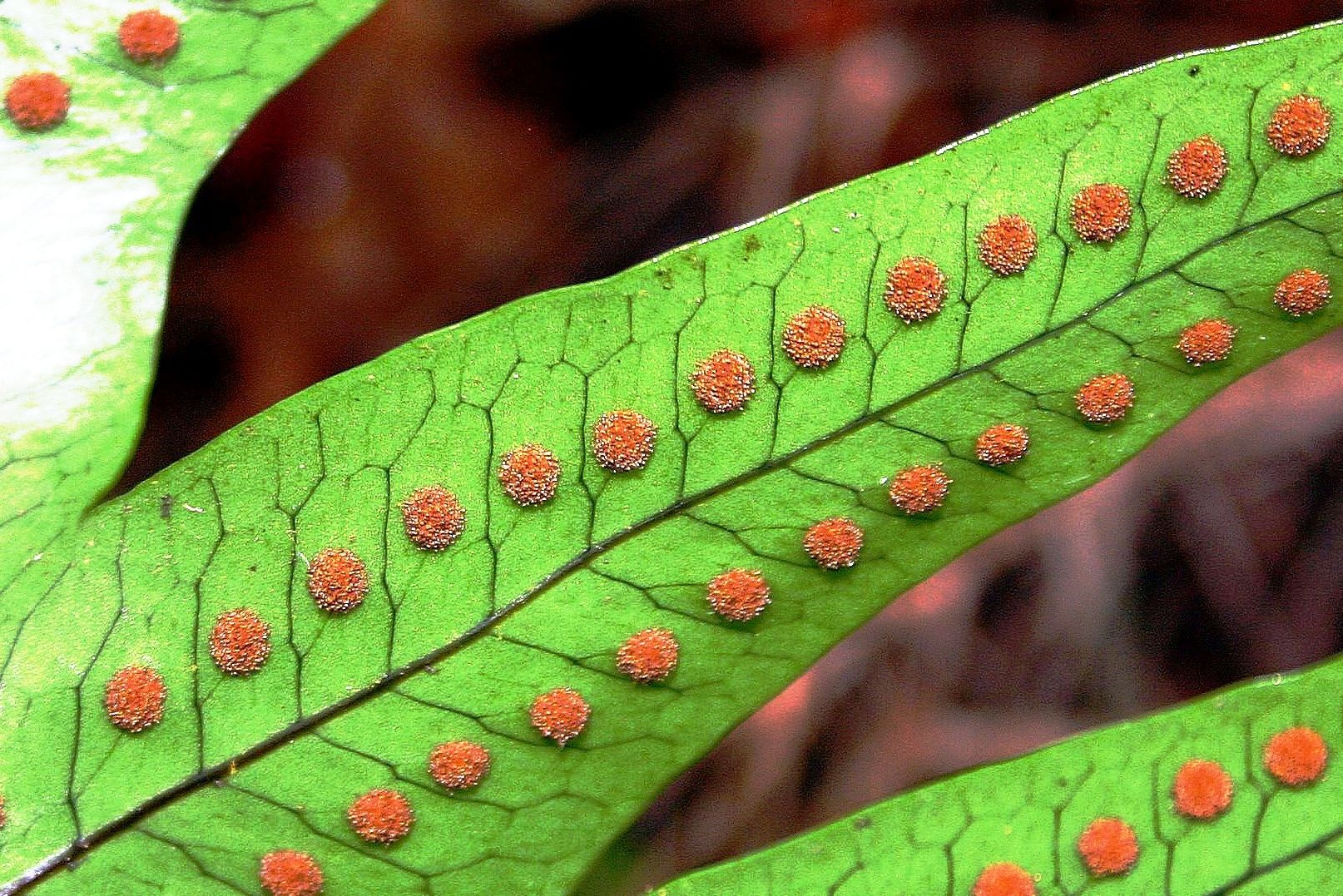
Last time, we talked about resurrection fern and its miraculous powers of recovery. You’ve probably had a close brush with ferns in general. Ferns are everywhere. More than likely, each of you reading this is not far away from a living fern plant right now. The distinctive shape of the fern frond is so well known that they can be recognized at a glance.
They're also quite ancient. The oldest fossil ferns date to 360 million years ago, over 200 million years before the first flowering plants appear.
You may be familiar with the phrase, 'familiarity breeds contempt' and I think it holds true for ferns in particular. They aren't as flashy as their younger relatives and so can easily be overlooked. But, I encourage you all to flip a few fronds upside-down the next time you encounter them. You might see something fascinating.
Those fuzzy little dots are each called a sorus (plural sori) and they are the reproductive structures of the fern. You won't see them on every fern you turn over, just like you don't always see flowers in bloom on plants year-round.
However, it is interesting to think about plant reproduction from a time before there were true seeds. The sori are made up of spores, which will eventually grow into a separate, small structure that then produces eggs and sperm.
However, more important than the specific process, I want you all to remember that there are interesting things to discover, even in the most unlikely and overlooked places. Never lose your curiosity about the natural world, because you never know what you might find when you turn over a new leaf.